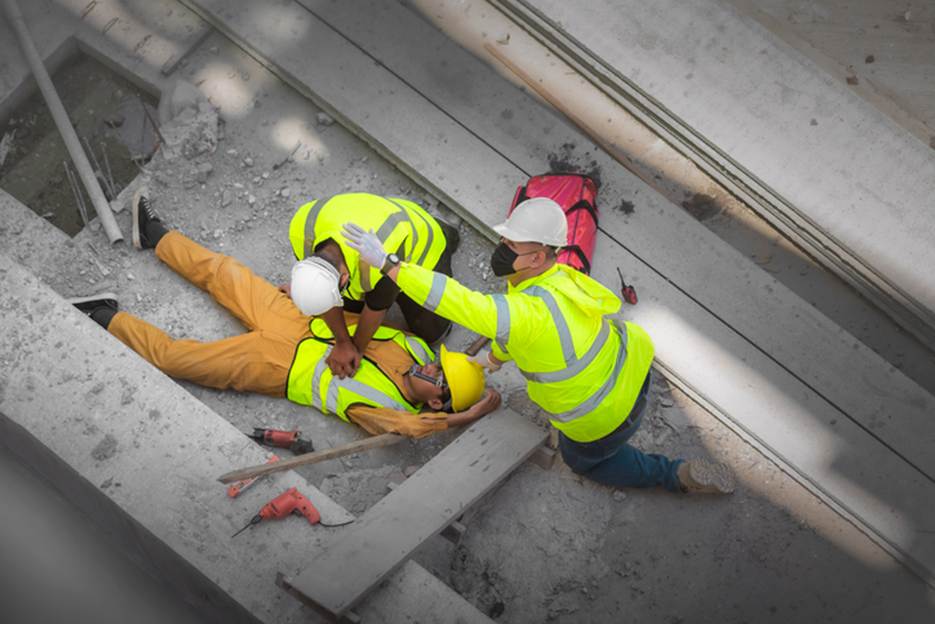
Injuries from Unsafe Construction Site Conditions
Unsafe Job Sites Put Every Worker at Risk
Every construction worker knows what danger feels like. It’s not just the heavy machinery or the dizzying heights, it’s the quiet moment when something feels off. Maybe the scaffolding wobbles a little too much. Maybe the wiring near the wet floor isn’t grounded. You mention it, but the foreman waves you off. Then, one day, the accident everyone saw coming actually happens.
At Horn Wright, LLP, our personal injury attorneys have represented men and women who showed up ready to work and left on stretchers because someone didn’t take safety seriously. Falls, electrocutions, collapsing structures, none of it happens by chance. It happens because job sites are run carelessly, with profit put ahead of protection.
Construction keeps New York alive. But it shouldn’t cost workers their lives to build it.
Examples of Dangerous Conditions Found on New York Construction Projects
Walk past a job site in Brooklyn or Midtown, and you’ll hear the usual sounds, hammering, grinding, voices calling out from the steel. But sometimes, if you look closer, you’ll see what most people miss: the signs of danger that workers face every day.
Unsafe conditions show up in dozens of forms, often small until they turn deadly:
- Unsecured scaffolding missing guardrails or stable footing.
- Exposed electrical wiring, often wet or frayed near metal surfaces.
- Falling debris from unprotected upper levels.
- Improperly stored materials, stacked too high or too close to edges.
- Blocked emergency exits or missing fire suppression equipment.
- Poor lighting, especially in tunnels, basements, and high-rise interiors.
On a Queens demolition site, one worker broke both legs after stepping onto a temporary walkway that wasn’t fastened properly. In Manhattan, a laborer suffered burns when faulty wiring on a portable light caught fire. None of these conditions were unpredictable. They were preventable, if someone had simply done their job.

How OSHA and State Safety Laws Protect Workers
When safety fails, the law steps in. Both federal OSHA regulations and New York’s Labor Laws exist to prevent unsafe site conditions from becoming fatal ones.
OSHA (Occupational Safety and Health Administration) requires employers to provide workplaces “free from recognized hazards” under 29 U.S.C. §654(a)(1). For construction sites, that means:
- Guardrails and fall protection under 29 CFR 1926.501.
- Regular inspections for electrical and structural hazards.
- Safety training and proper personal protective equipment (PPE).
In New York, the state goes further. Labor Law §200 sets the general duty for safe workplaces. Labor Law §240, the “Scaffold Law,” covers elevation-related risks. Labor Law §241(6) allows injured workers to sue when employers violate the state’s Industrial Code, rules that dictate everything from ladder angles to debris removal.
When these laws are enforced, job sites stay safe. When they’re ignored, workers get hurt.
The truth is, every injury tied to unsafe conditions has one thing in common, someone failed to follow the law designed to prevent it.
Evidence That Proves Site Negligence and Unsafe Practices
Proving that a construction site was unsafe isn’t always easy. After an accident, employers often scramble to clean up the evidence, fixing the problem before investigators arrive. That’s why preserving proof as quickly as possible can make or break a case.
Key evidence includes:
- Photos and videos of the site conditions right after the incident.
- Inspection reports showing unaddressed safety hazards.
- Witness statements from coworkers who complained or saw violations.
- OSHA citations issued for past infractions.
- Maintenance and safety logs that show skipped checks or false entries.
New York’s Labor Law §241(6) allows workers to point directly to Industrial Code violations, real, specific rules that were broken. For example, if a general contractor failed to provide guardrails under 12 NYCRR §23-1.16, that’s not a vague claim, it’s a documented safety failure.
Federal projects fall under the Federal Tort Claims Act (FTCA), which gives injured workers a way to hold the government accountable when negligence occurs on federally owned sites.
These cases depend on timing. The longer you wait, the faster job sites change and the harder it becomes to prove how unsafe things really were.
Vermont Provides Fewer State-Level Safety Protections Than New York
If a worker in Vermont suffered the same injury as a worker in New York, the legal outcome could be drastically different. Vermont doesn’t have the same labor protections that New York’s construction workforce depends on.
- No Scaffold Law equivalent: Vermont workers must prove negligence instead of relying on strict liability.
- Limited use of safety code violations: There’s no state-level Industrial Code that gives workers direct leverage like New York’s §241(6).
- Narrower damages: Vermont courts are more restrictive when it comes to awarding compensation for pain and suffering.
- Comparative negligence bar: If a worker is more than 50% at fault, they recover nothing.
New York, in contrast, allows recovery even if the worker shares part of the blame. The law recognizes that construction work is dangerous by nature and that responsibility lies primarily with those controlling the site, owners, contractors, and supervisors.
That difference saves lives and livelihoods here. Vermont’s system, though well-meaning, leaves too many workers without full recovery.
Compensation Options for Victims Injured by Unsafe Work Conditions
When workers are hurt by unsafe site conditions, they often face more than physical pain. There’s lost income, hospital bills, and the anxiety of not knowing when, or if, they can work again. Thankfully, New York gives injured workers several legal paths to recover financially.
Workers’ Compensation
This is usually the first source of relief. It pays for medical care and part of your lost wages. But it doesn’t account for long-term suffering or full income loss.
Labor Law Claims
Workers can file lawsuits under §200, §240, and §241(6) to hold contractors and owners directly accountable. These claims can cover:
- Complete wage loss.
- Pain and emotional suffering.
- Rehabilitation and long-term medical care.
- Future earnings if a return to construction isn’t possible.
Third-Party and Federal Claims
If a defective product, subcontractor, or government agency contributed to the unsafe conditions, additional claims can be made under product liability law or the FTCA.
Each route has its own deadlines, and missing one can mean losing compensation altogether. That’s why getting legal help early isn’t just smart, it’s essential.
How Lawyers Use Safety Violations to Build Strong Cases
Strong cases are built on details, what was violated, who ignored it, and when it happened. Skilled lawyers use those details like bricks, stacking them until a clear picture of negligence emerges.
Here’s how the best legal teams handle these cases:
- Investigate fast: They visit the site, gather photos, and secure reports before evidence disappears.
- Coordinate with OSHA: They obtain inspection records and prior citations to show a pattern of unsafe behavior.
- Work with experts: Safety engineers and construction specialists explain exactly how the hazard caused the injury.
- Show the human cost: They connect the legal facts to real lives—the recovery time, the lost mobility, the missed paychecks.
When lawyers can show both the rule broken and the harm it caused, juries understand that these aren’t random accidents, they’re choices made by people who should’ve known better.
That’s what turns a case from “just another injury” into a clear story of accountability.
Horn Wright, LLP, Helps Injured Workers Expose Unsafe Worksites
A dangerous construction site doesn’t just threaten one worker—it puts everyone in harm’s way. When companies ignore safety rules, it’s not an accident waiting to happen; it’s negligence already in motion.
At Horn Wright, LLP, our personal injury attorneys have fought for workers across New York injured by unsafe job site conditions. We’ve gone up against contractors who skipped inspections, property owners who ignored hazard warnings, and corporations that tried to hide OSHA violations.
From Brooklyn brownstone restorations to Staten Island infrastructure projects, we’ve seen how fast a single oversight can destroy a family’s stability. Our job is to make sure that doesn’t happen quietly.
If your injury happened because someone refused to make your site safe, you don’t have to carry that burden alone. The law is on your side, and so are we.

What Sets Us Apart From The Rest?
Horn Wright, LLP is here to help you get the results you need with a team you can trust.
-
Client-Focused ApproachWe’re a client-centered, results-oriented firm. When you work with us, you can have confidence we’ll put your best interests at the forefront of your case – it’s that simple.
-
Creative & Innovative Solutions
No two cases are the same, and neither are their solutions. Our attorneys provide creative points of view to yield exemplary results.
-
Experienced Attorneys
We have a team of trusted and respected attorneys to ensure your case is matched with the best attorney possible.
-
Driven By Justice
The core of our legal practice is our commitment to obtaining justice for those who have been wronged and need a powerful voice.

